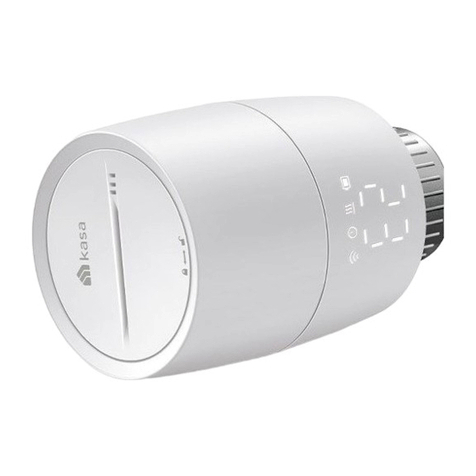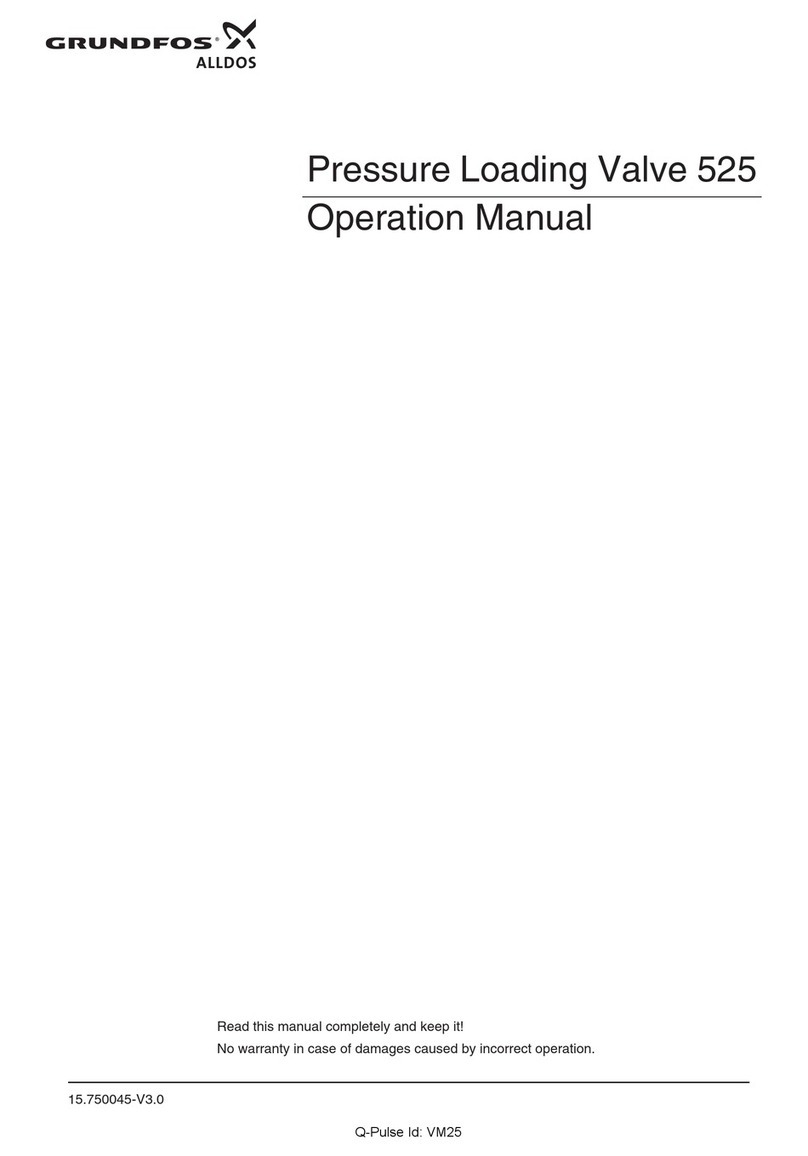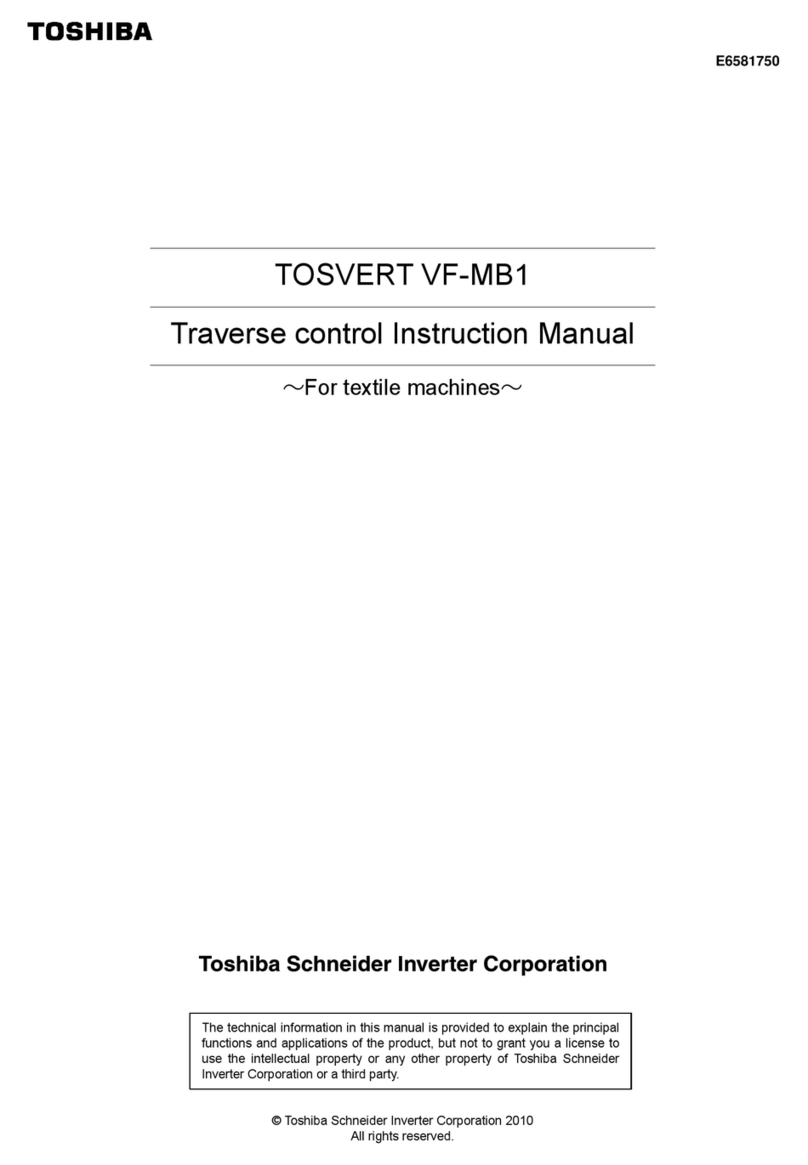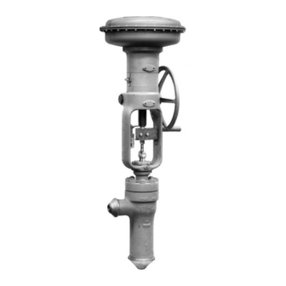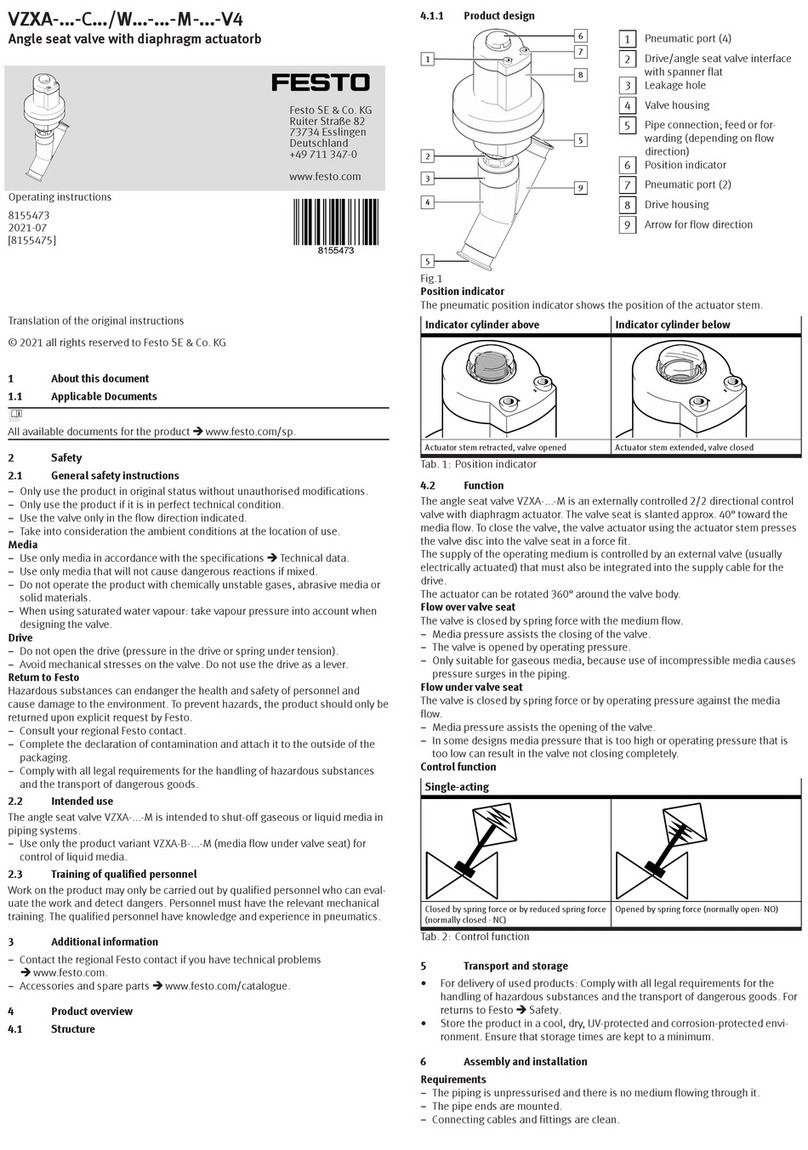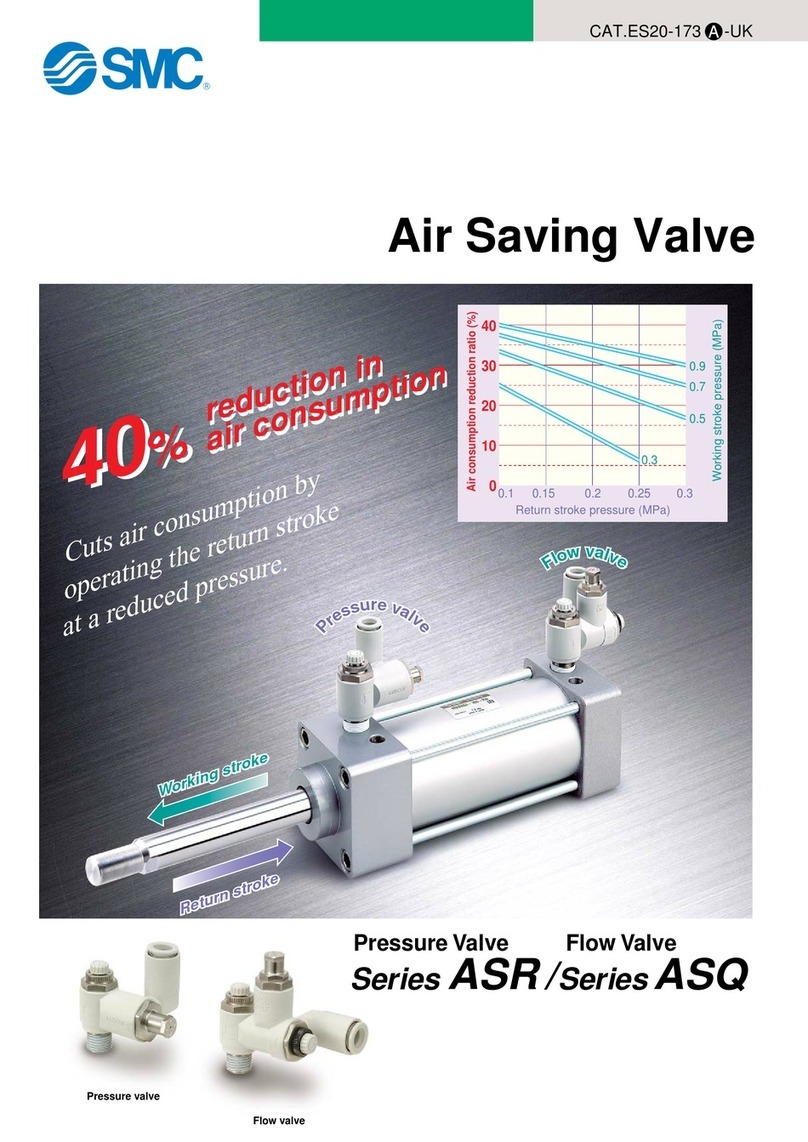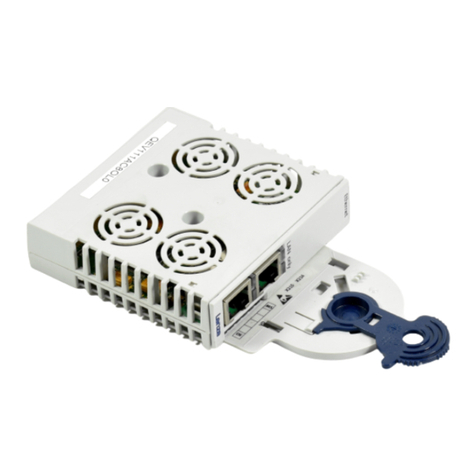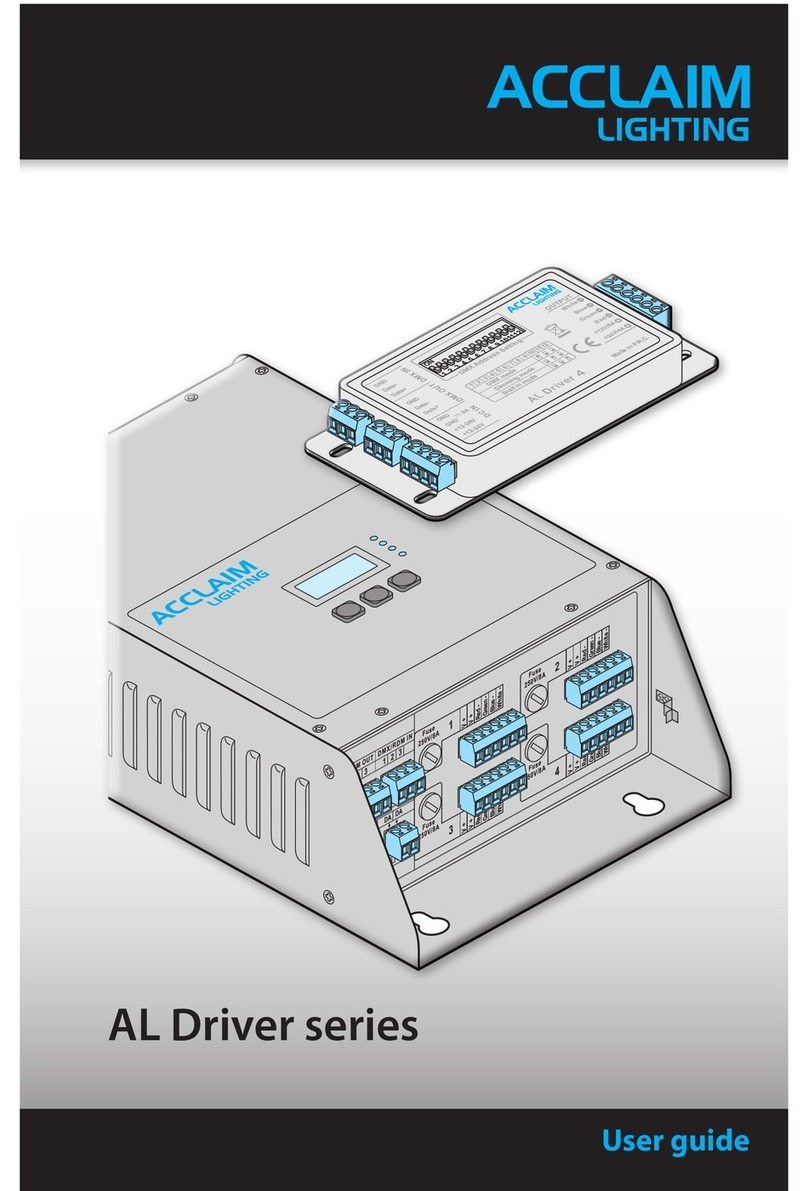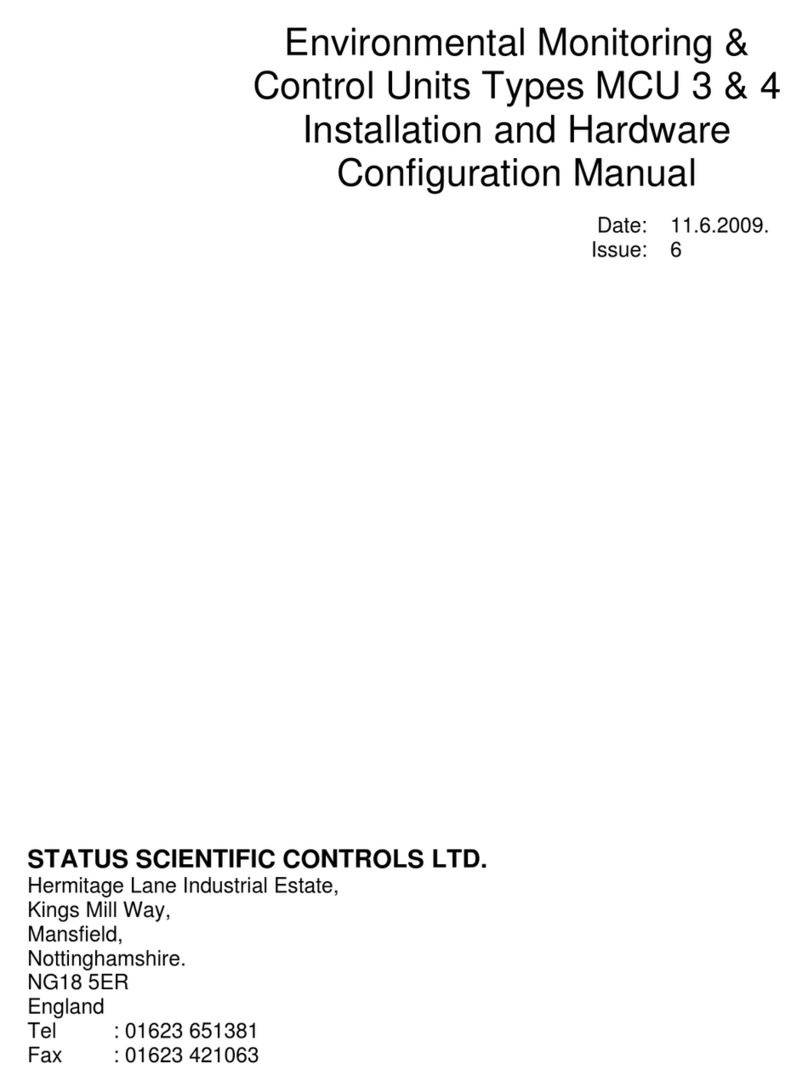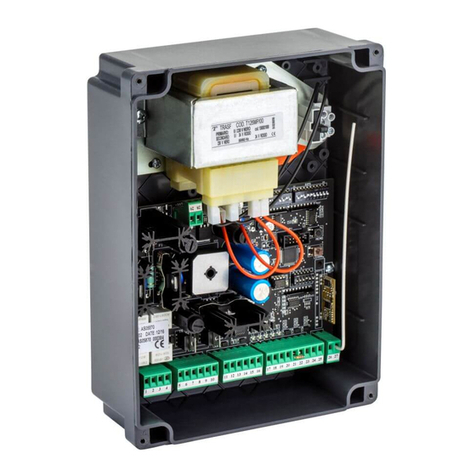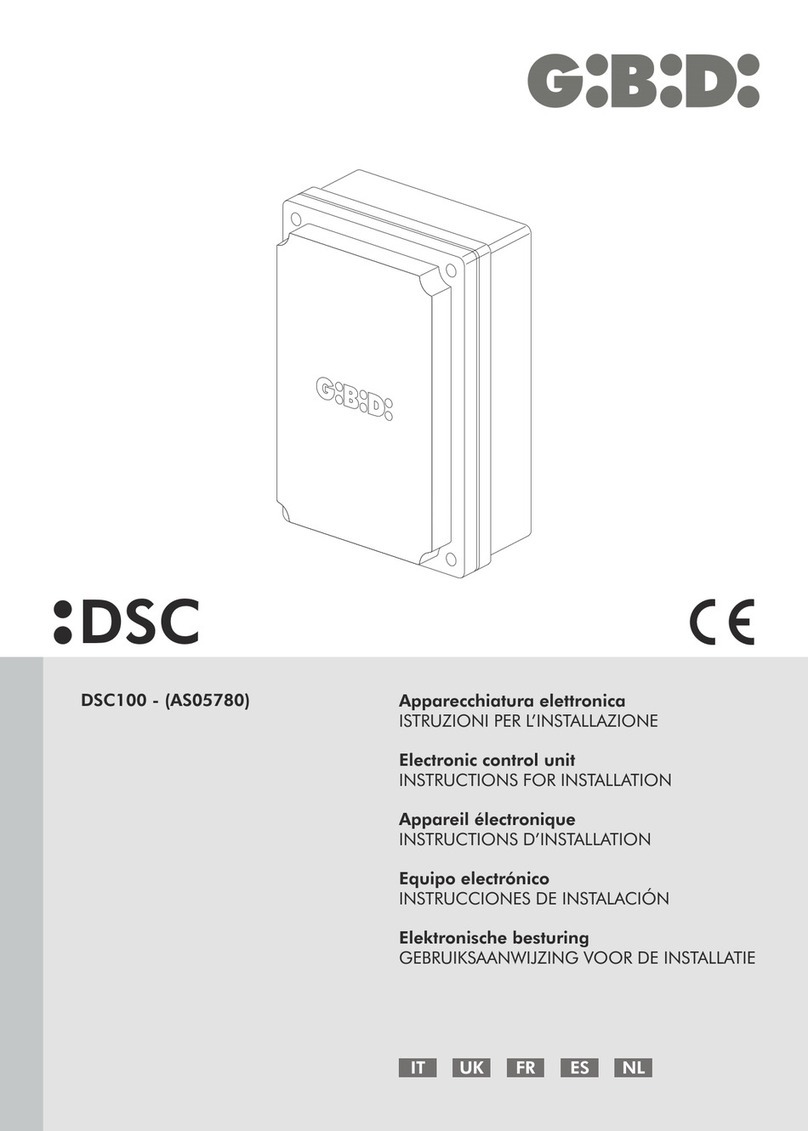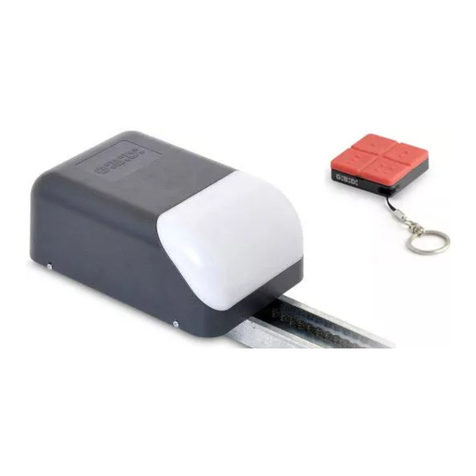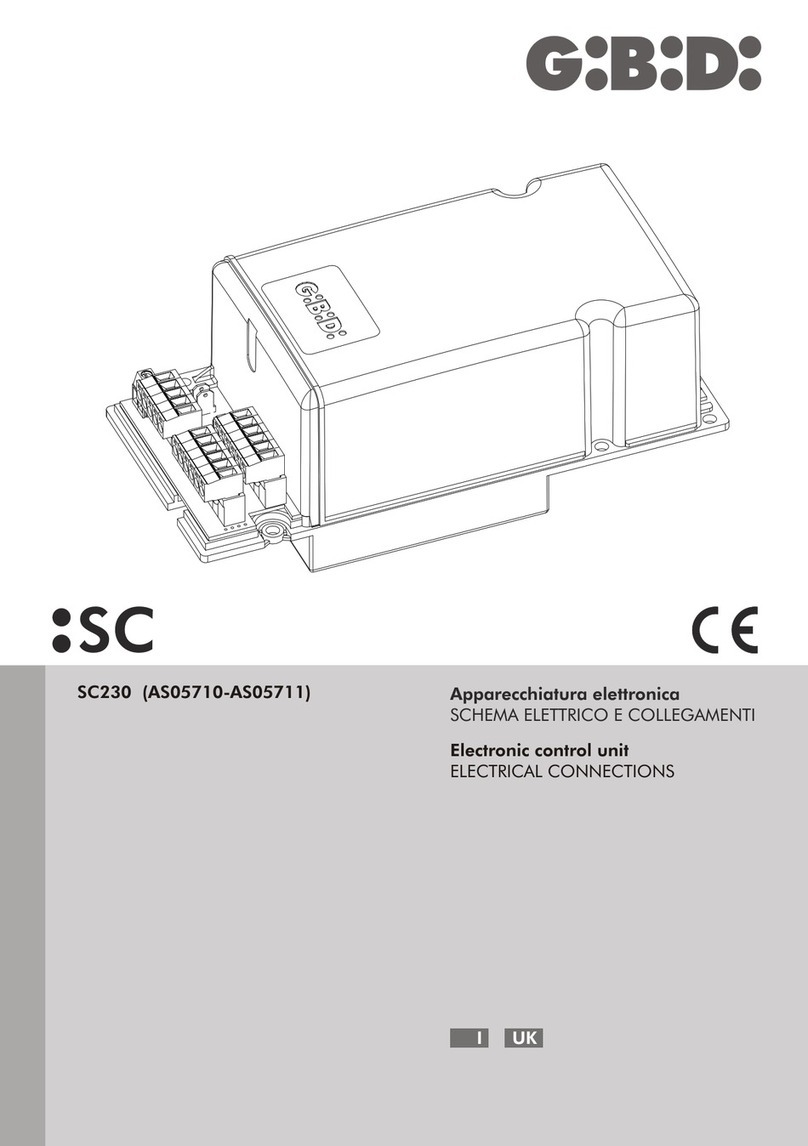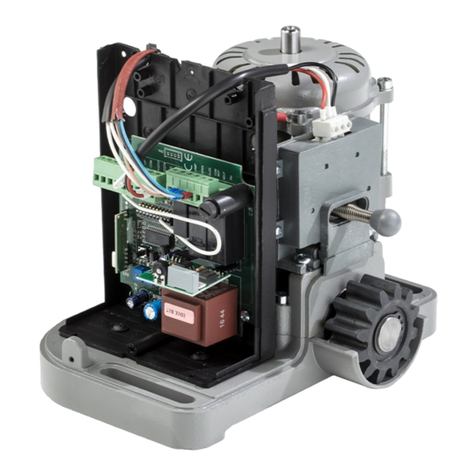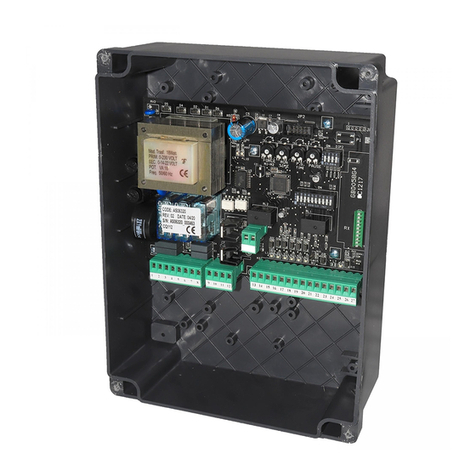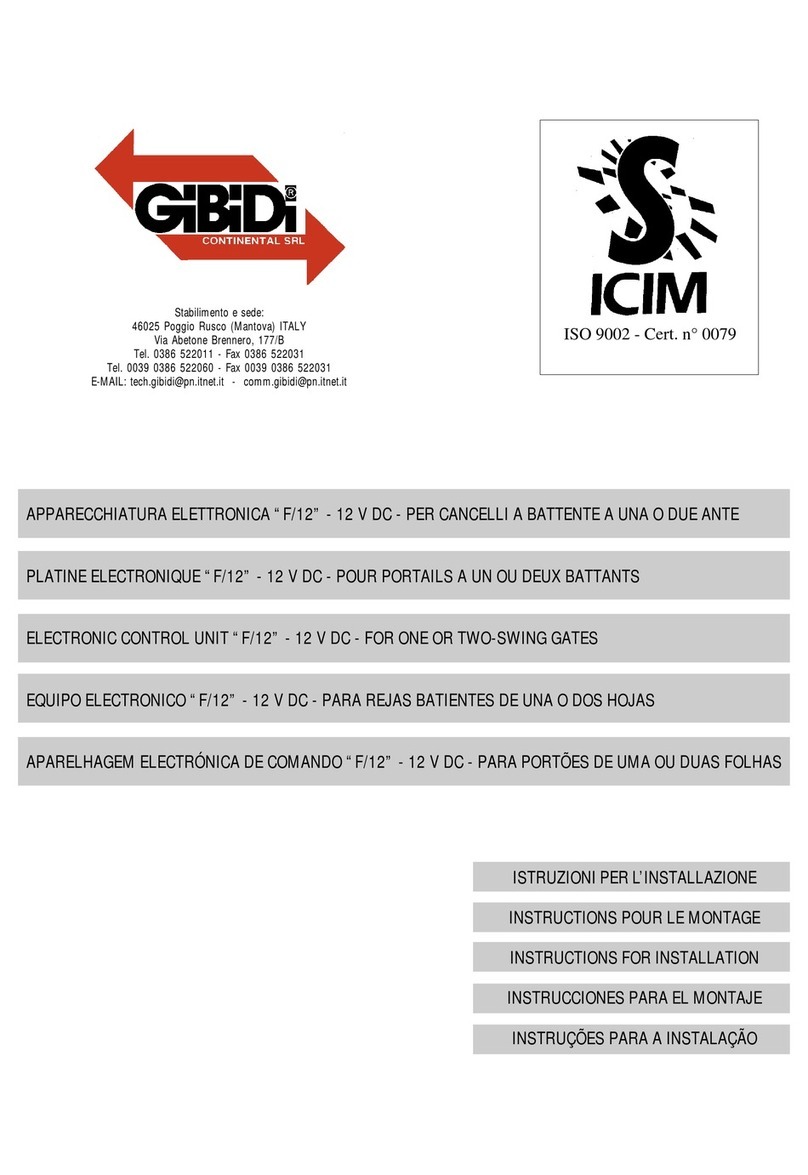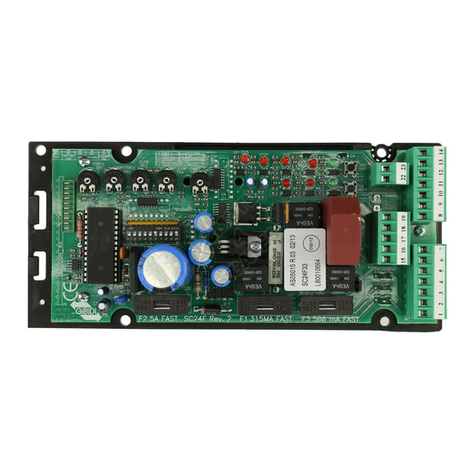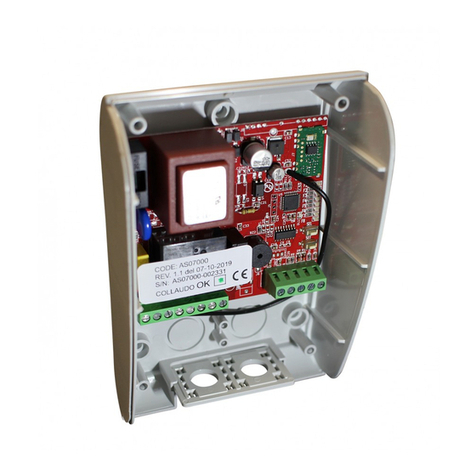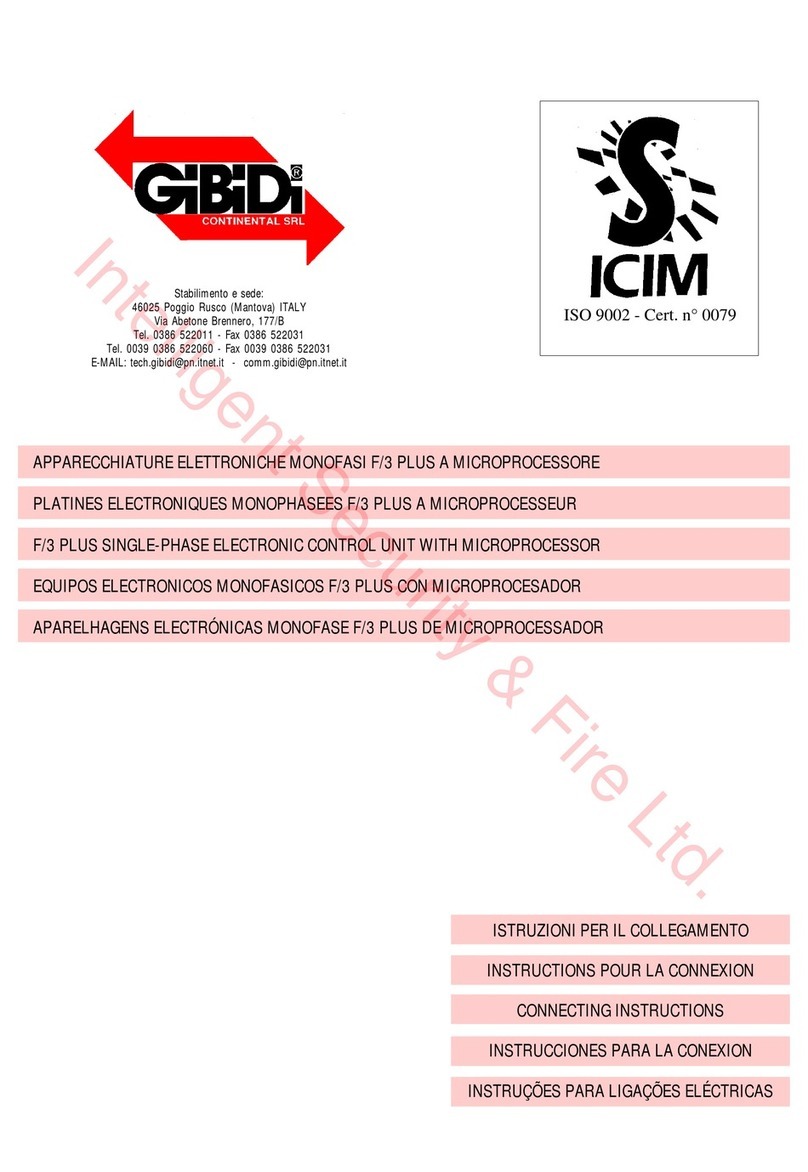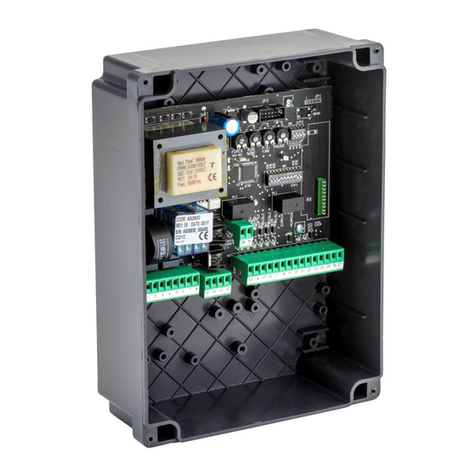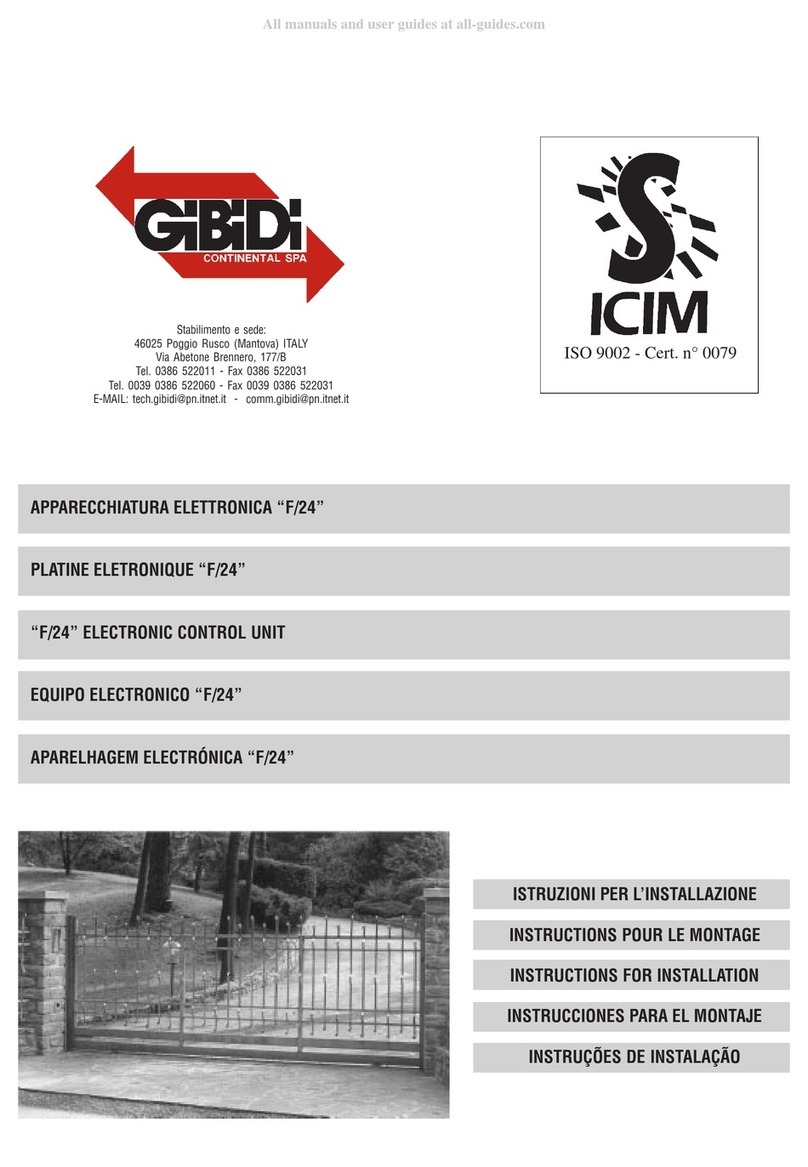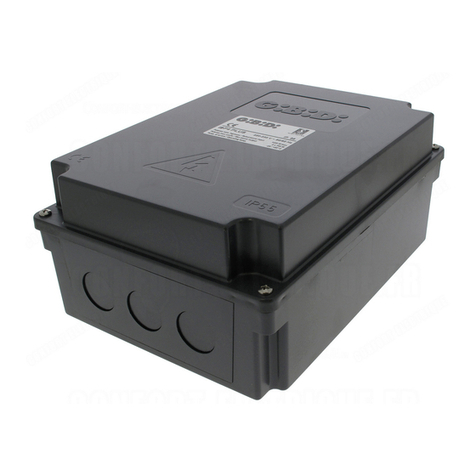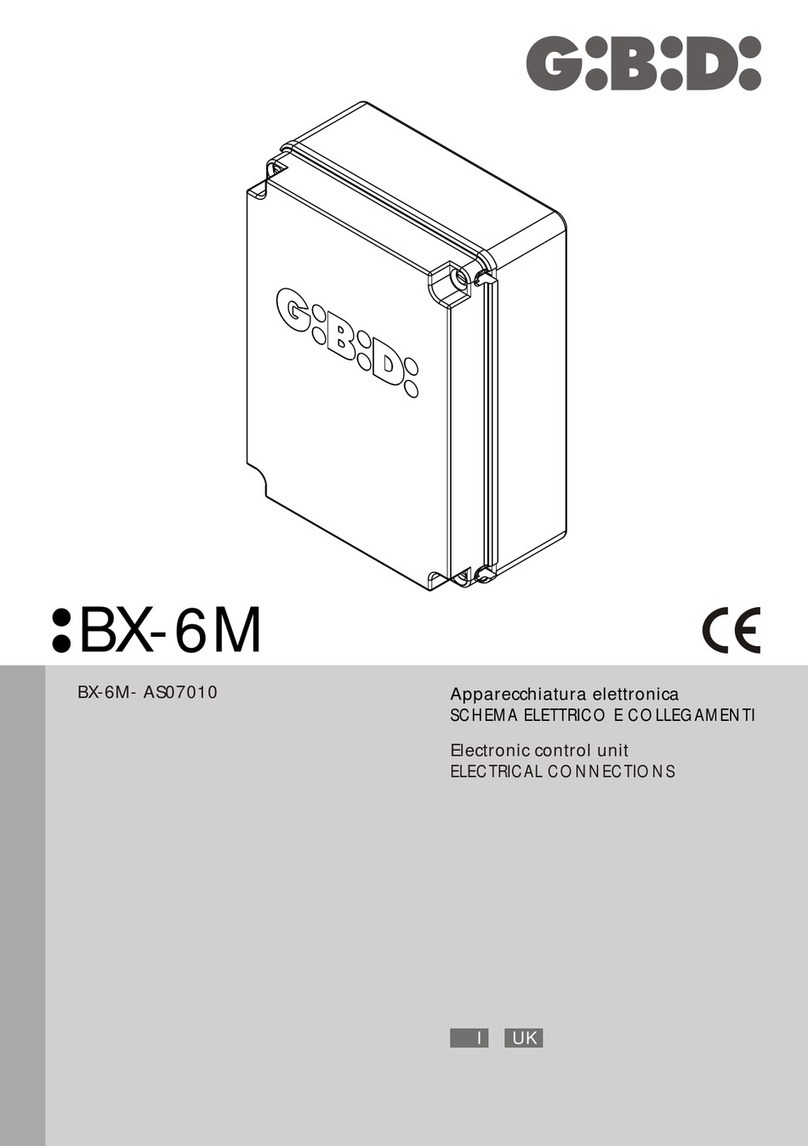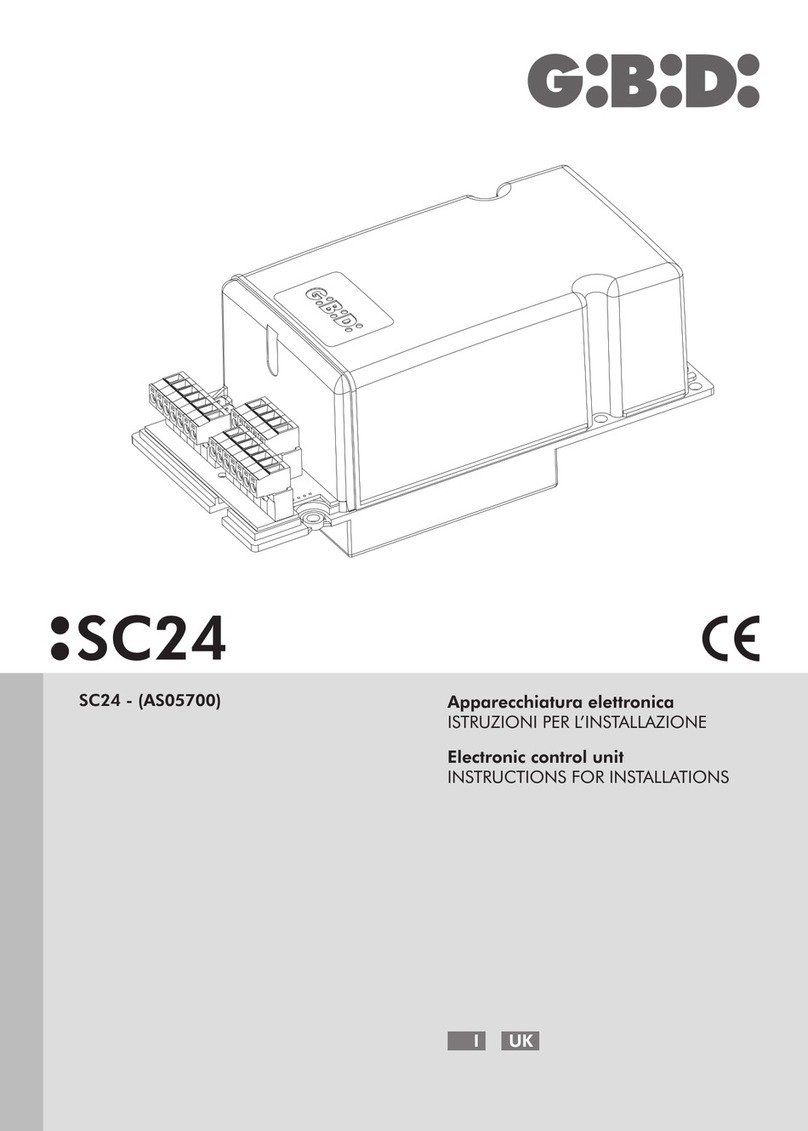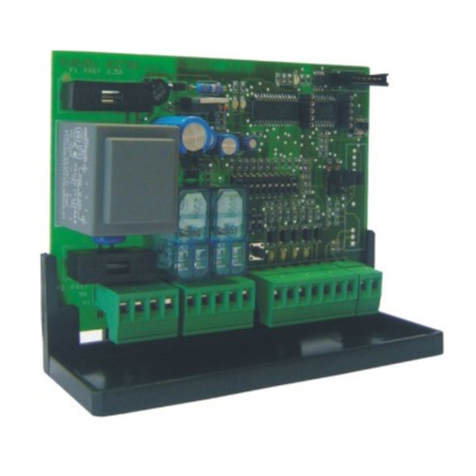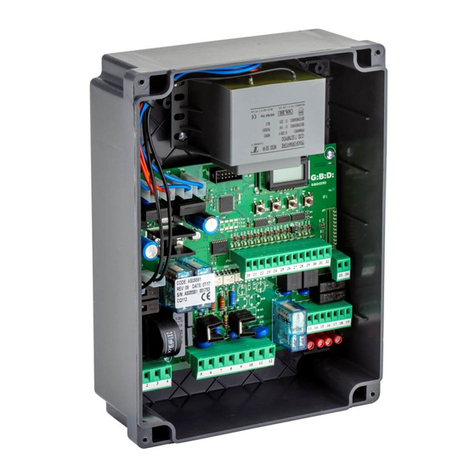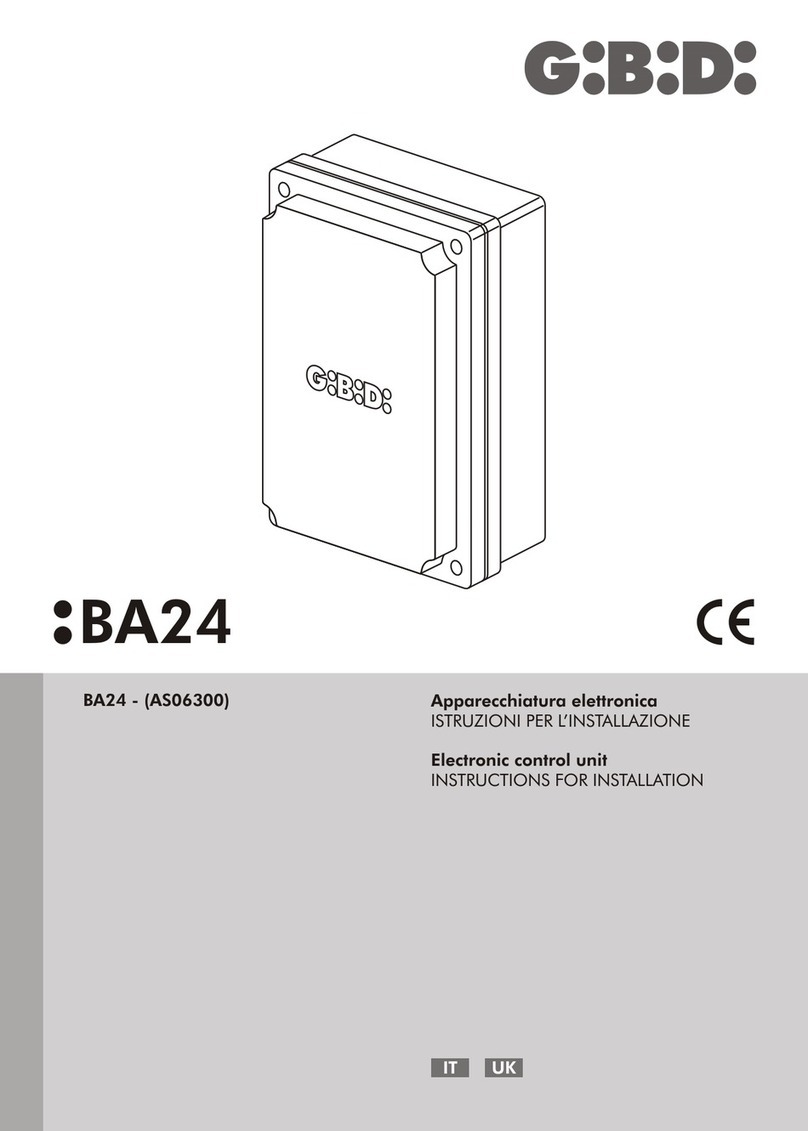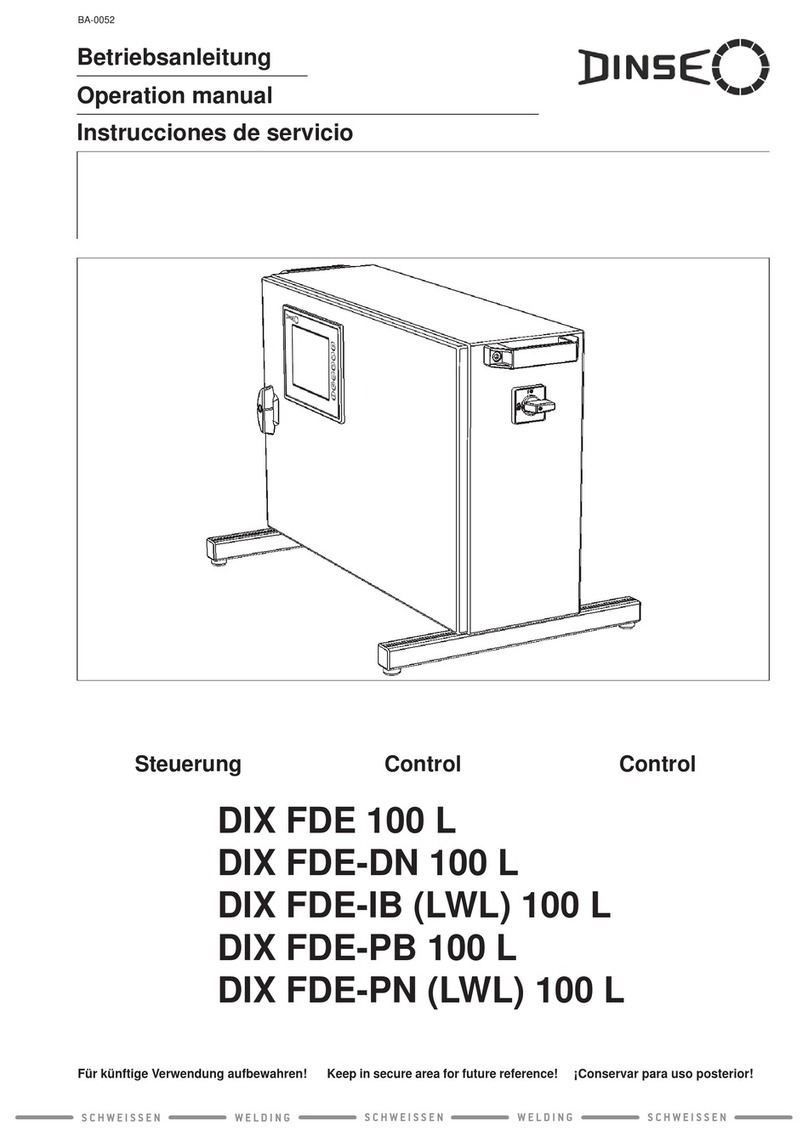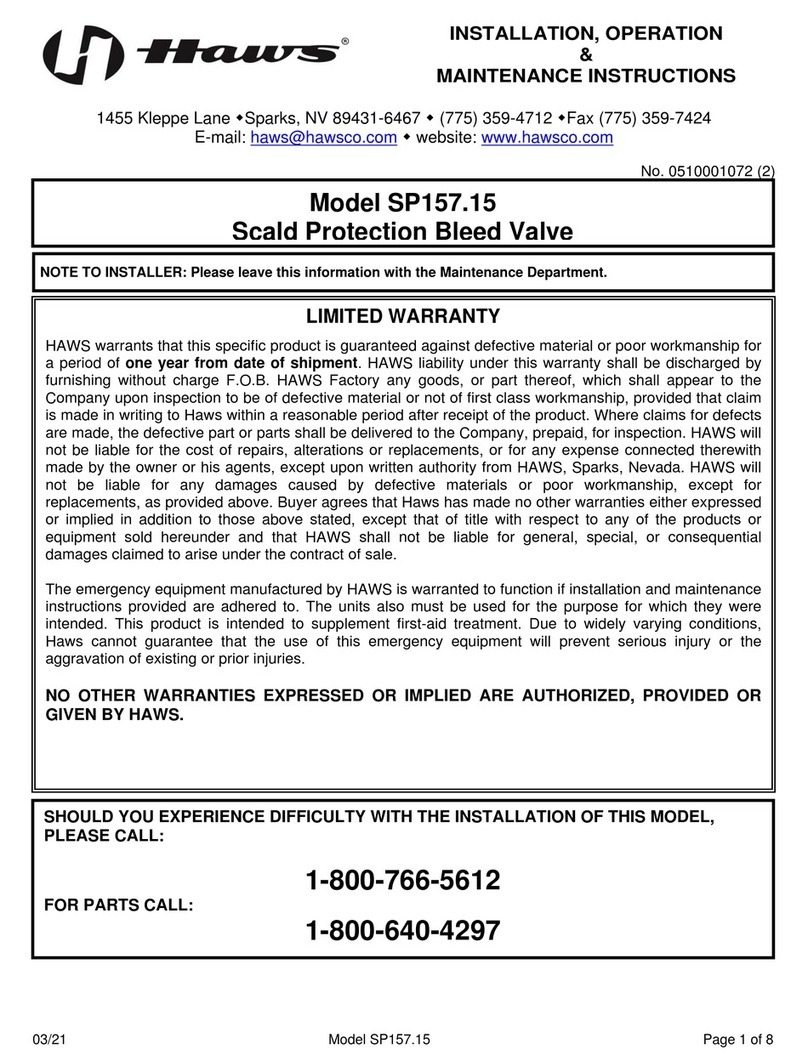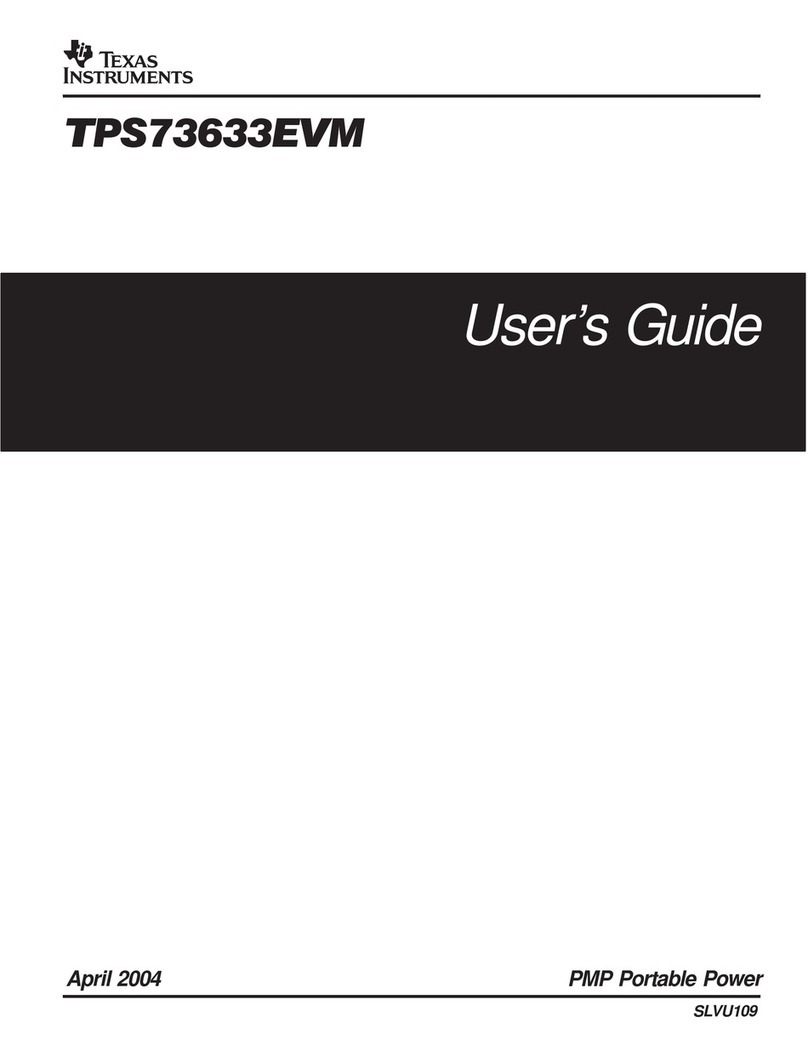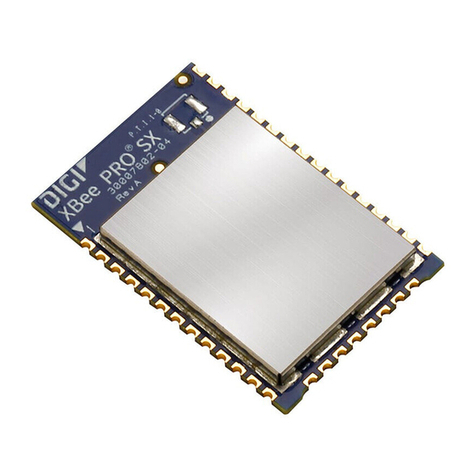
DSC 13
F
En cas de panne ou de dysfonctionnements, il faut couper l'alimentation en amont de l'appareil et appeler
le service d'assistance technique.
Les éventuelles réparations doivent être exécutées par un personnel spécialisé qui utilise des matériels
d'origine et certifiés.
AVERTISSEMENTS POUR L'UTILISATEUR
BRANCHEMENTS ELECTRIQUES: BORNIERS
• S'il y a plusieurs dispositifs à contacts type NF, pour la même entrée de l'unité, il faut les placer en série
entre eux.
• N'effectuer aucune modification n'étant pas prévue dans ces instructions. Le constructeur décline toute
responsabilité, quant au bon fonctionnement de l'automation, en cas d'utilisation de composants et
d'accessoires n'étant pas de sa production et inappropriés pour l'application prévue.
• La réalisation de portes, de grilles automatiques et de portes de garage, est soumise aux normes
suivantes en vigueur :
EN 12453 Portes et grilles industrielles, commerciales et de garage.
Sécurité pour portes motorisées - Conditions requises
EN 12978 Portes et grilles industrielles, commerciales et de garage. Dispositifs de sécurité pour portes
et grilles motorisées - Conditions requises et types d'essais.
• Ce Manuel d'instructions s'adresse aux personnes autorisées à effectuer la mise en place "d'appareils
sous tension". Il faut donc avoir une bonne connaissance de la technique, exercée comme profession et
conformément aux réglementations en vigueur.
• La maintenance doit être effectuée par un personnel qualifié.
• Avant d'effectuer toute opération de nettoyage ou de maintenance, il faut débrancher l'appareil des
réseaux d'alimentation électrique.
• L'utilisation des produits et leur destination à des usages différents de ceux prévus, n'a pas été
expérimentée par le constructeur, les travaux exécutés sont donc sous l'entière responsabilité de
l'installateur.
• Les deux entrées doivent se connecter à un dispositif sensible 8k2, s'il faut connecter un seul dispositif
sensible, il faudra connecter une résistance 8k2 (fournie en équipement) à l'entrée inutilisée.
La borne n˚2 est connectée à une masse, par conséquent, en cas d'alimentation
continue, il faut faire attention à la polarité.
J1
1
9
11
3
2
10
12
13
4
5
6
7
8
12/24 V
TEST
SAF 1
NO_1
12/24 V
TEST
COM
SAF 2
CM 1
NC_1
NO_2
CM 2
NC_2
Alimentation positive (voir Dip 1)
Entrée TEST (si inutilisée, raccorder à l'entrée N˚2)
Entrée SAFETY 1 pour dispositif sensible 8,2 KΩ
Sortie avec contact NO à intervention retardée
Alimentation négative (voir Dip 1)
Entrée TEST (si inutilisée, raccorder à l'entrée N˚1)
Commun entrée SAFETY 1-2
Entrée SAFETY 2 pour dispositif sensible 8,2 KΩ
Commun sortie retardée
Sortie avec contact NF à intervention retardée
Sortie avec contact NO à intervention immédiate
Commun sortie immédiate
Sortie avec contact NF à intervention immédiate
Cette condition
s'obtient avec la
DSC90 alimentée
et avec les
dispositifs senseur
correctement
connectés.
Borne Position Signal Description




















